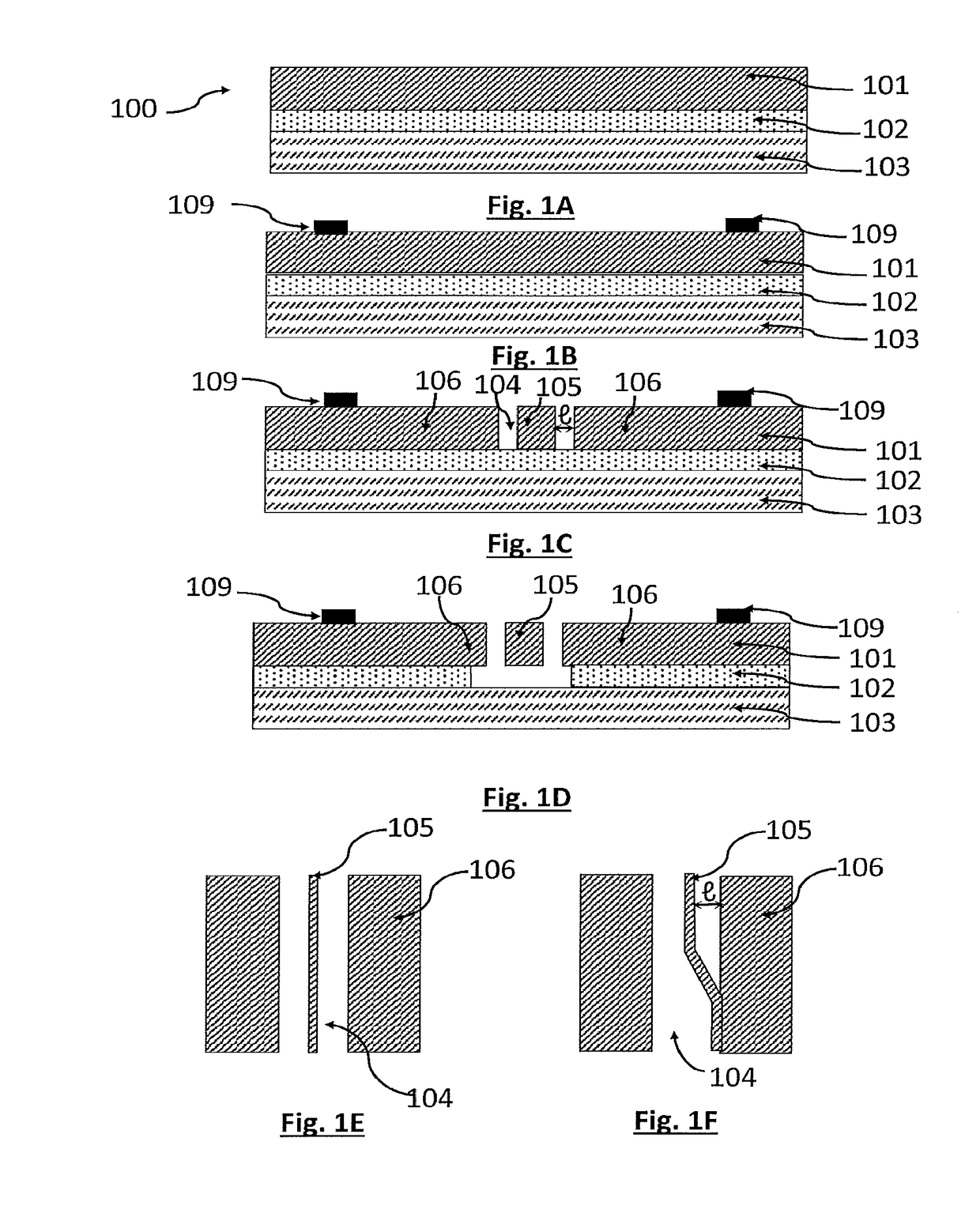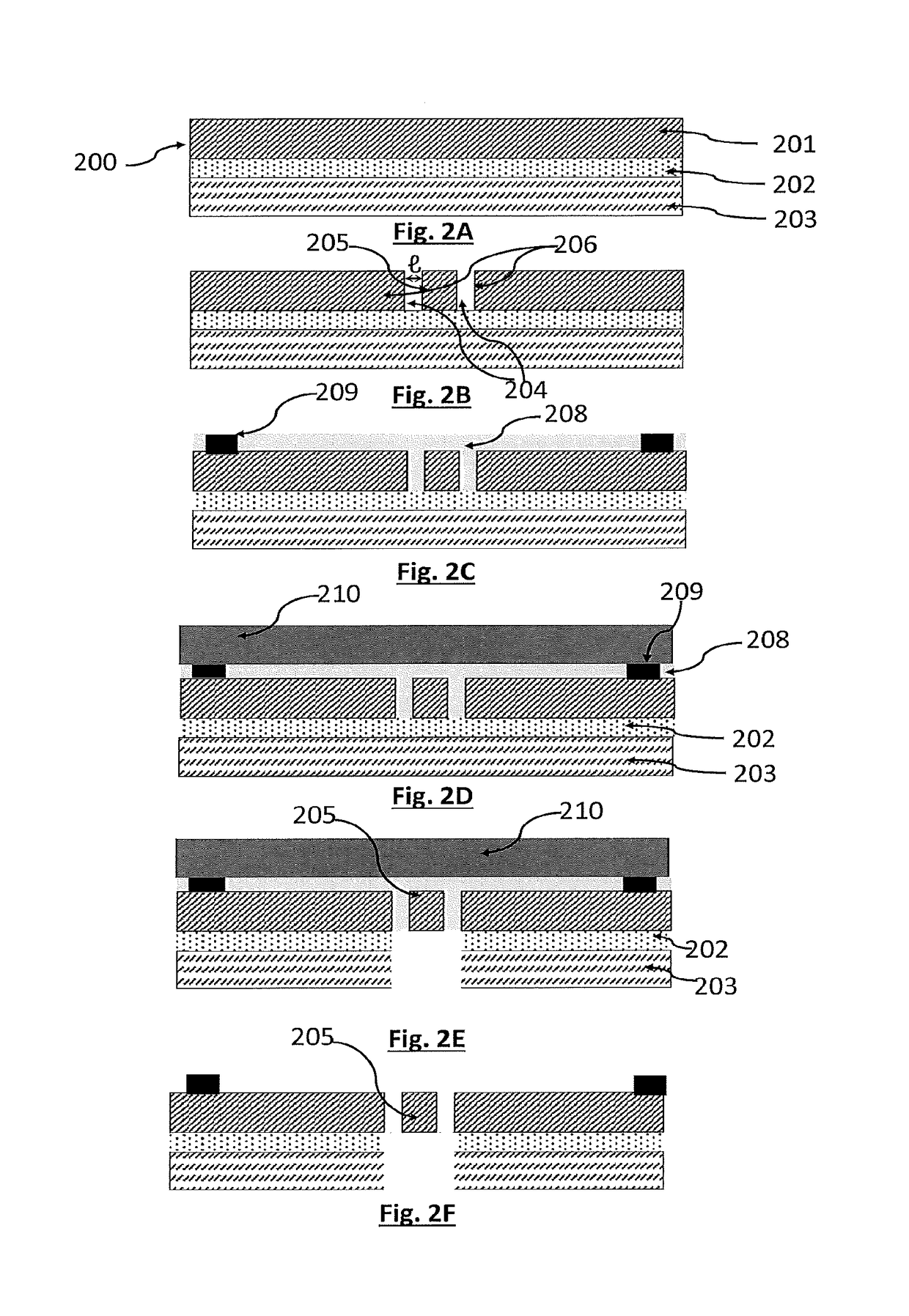Process for producing an electromechanical device
a technology of electromechanical devices and process, which is applied in the direction of microstructural devices, microstructure devices, microstructure technology, etc., can solve the problems of limiting the choice of usable materials, affecting the use of materials, and affecting the performance of the device, so as to promote molecular adhesion, increase bonding energy, and avoid stiction.
- Summary
- Abstract
- Description
- Claims
- Application Information
AI Technical Summary
Benefits of technology
Problems solved by technology
Method used
Image
Examples
first embodiment
[0046]FIGS. 3A to 3M illustrate the steps of a first embodiment intended to produce a microelectromechanical system (MEMS) or nanoelectromechanical system (NEMS).
[0047]A silicon-on-insulator (SOI) substrate 10, called the base substrate, is provided. This substrate comprises an insulating intermediate layer 2 placed between an upper layer 1 made of silicon, and preferably made of single-crystal silicon, and a lower layer 3 made of silicon. These three layers lie parallel to a plane P10 called the plane of the substrate. The intermediate layer 2 consists of what is called a buried oxide layer, usually designated by the acronym BOX (for Buried OXide). It is preferably silicon oxide (SiO2). The intermediate layer 2 serves as an etch stop layer and as a sacrificial layer, as described below. A dielectric is preferably used to form this layer, because this makes it possible to avoid short-circuiting a plurality of electromechanical devices formed in the same substrate. The thickness of t...
third embodiment
[0081]FIGS. 6A to 6D show various steps for producing a substrate according to this FIG. 6A shows the formation of first apertures 4 and the formation of a cavity 5 by removal of a portion of the sacrificial layer 2 located between said first apertures. FIG. 6B shows what are called post-processing steps, which are carried out after the blocking layer 6 has been applied to the upper layer 1, these post-processing steps resulting in the formation of functional elements 9 on the surface of this blocking layer 6. By way of nonlimiting example, the formation of a metal layer 9.1, of dielectric layers 9.2 and of hydrophobic layers 9.3 has been shown. FIG. 6C shows the substrate after a beam-shaped movable portion 7.1 of the device has been defined, the etched trench 8 encircling this movable portion. FIG. 6D shows another example embodiment, in which the etched trench 8 defines not one movable portion 7.1 but three beam-shaped movable portions. It will be understood that, depending on t...
PUM
| Property | Measurement | Unit |
|---|---|---|
| thickness | aaaaa | aaaaa |
| width | aaaaa | aaaaa |
| thickness | aaaaa | aaaaa |
Abstract
Description
Claims
Application Information
 Login to View More
Login to View More - R&D
- Intellectual Property
- Life Sciences
- Materials
- Tech Scout
- Unparalleled Data Quality
- Higher Quality Content
- 60% Fewer Hallucinations
Browse by: Latest US Patents, China's latest patents, Technical Efficacy Thesaurus, Application Domain, Technology Topic, Popular Technical Reports.
© 2025 PatSnap. All rights reserved.Legal|Privacy policy|Modern Slavery Act Transparency Statement|Sitemap|About US| Contact US: help@patsnap.com



